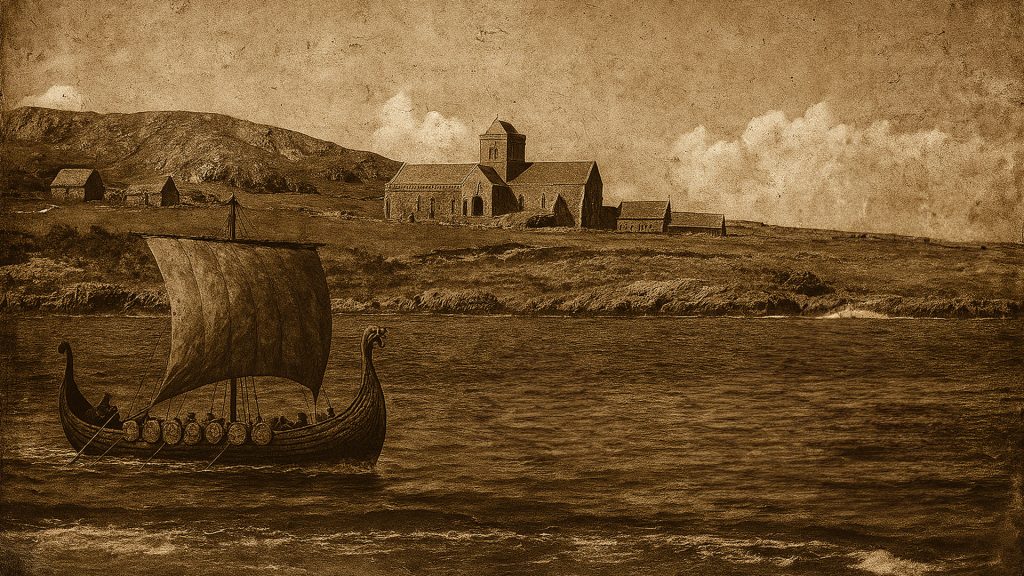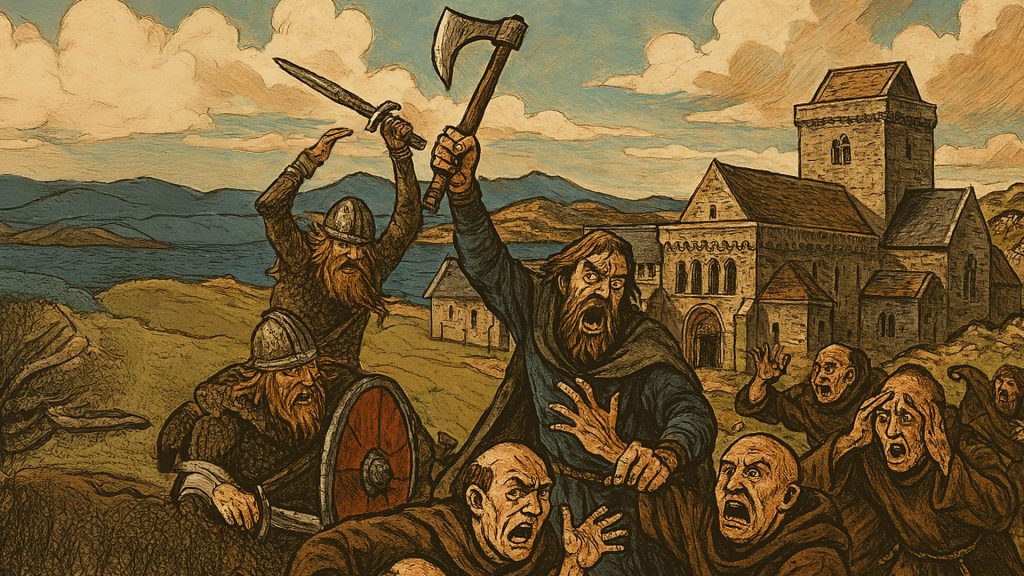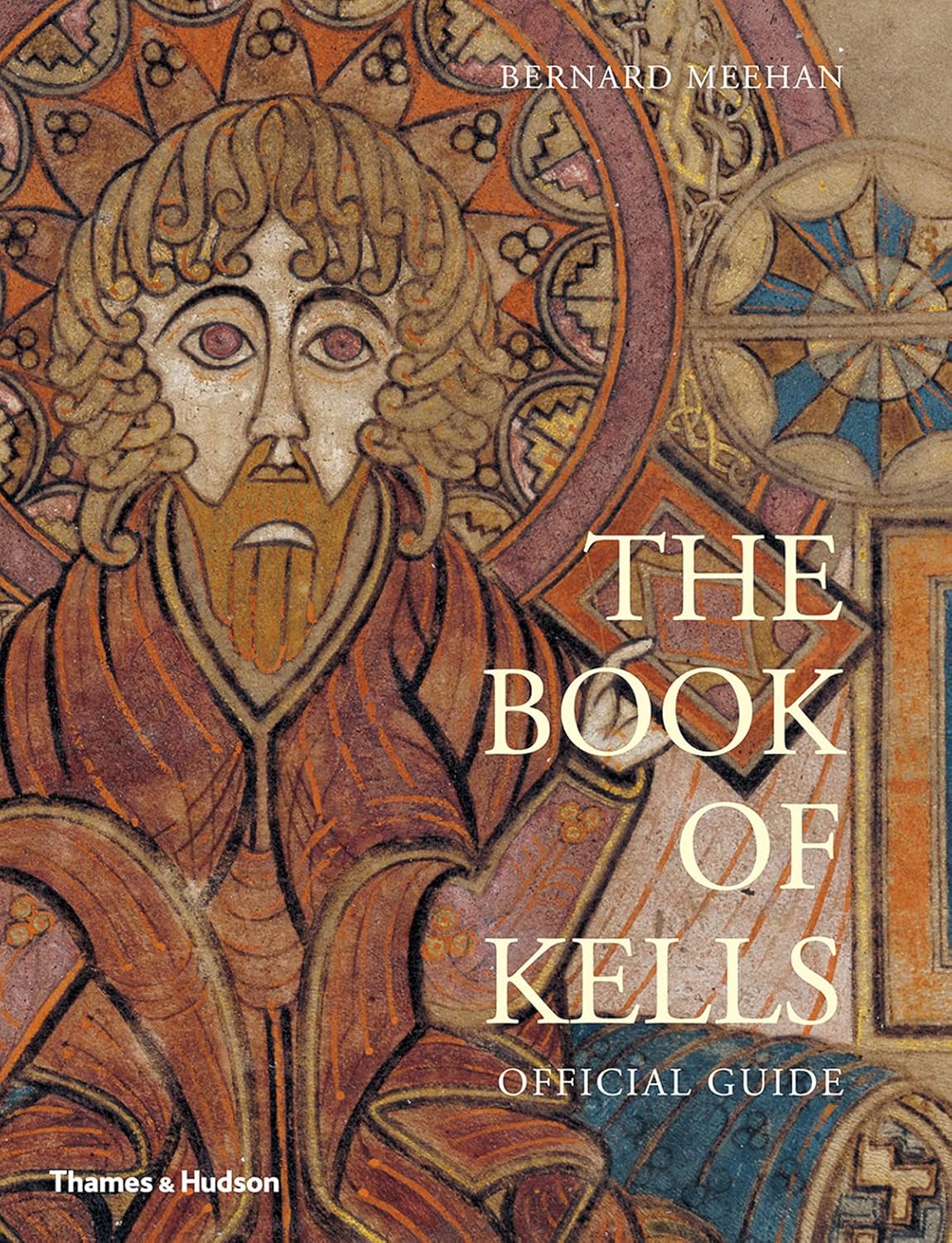
Welcome to Iona, a small Hebridean island with a vast and layered history. Known as the birthplace of Christianity in Scotland, Iona’s tranquil shores also witnessed one of the most violent chapters in early medieval history: the Viking Age. For visitors walking its sacred paths today, understanding this turbulent period adds depth to the experience.
Why Iona? The Lure of a Holy Island
Founded in 563 AD by the Irish monk St. Columba, Iona’s monastery quickly became one of the most influential religious centres in Britain and Ireland. By the late 8th century, it was a hub of learning, artistry, and devotion—home to illuminated manuscripts, relics, and treasures of gold and silver. But its fame came with vulnerability. With no military defence and immense spiritual wealth, Iona became a prime target for Norse raiders arriving in the Hebrides in the late 700s.
The First Waves of Attacks
The first Viking raid on Iona occurred in 795 AD, followed by further attacks in 802 and 806. The latter was particularly brutal: 68 monks were killed in a single assault, likely at the site now known as Martyrs’ Bay. Survivors fled to Ireland, taking with them sacred items and manuscripts, including, scholars believe, the unfinished Book of Kells. That masterpiece was likely completed at the Abbey of Kells, giving it its name.
The Book of Kells, dating from about 800, is a brilliantly decorated manuscript of the four Gospels. This new official guide, by the former Keeper of Manuscripts at Trinity College Library, Dublin, provides fascinating insights into the Book of Kells, revealing the astounding detail and richness of one of the greatest works of medieval art.
Faith in the Face of Violence
The raids didn’t end there. In 825 AD, Vikings returned and killed St. Blathmac, a monk who refused to reveal the location of St. Columba’s relics. He was murdered on the altar during a church service, a stark symbol of spiritual defiance.

Yet Iona endured. Despite repeated violence, the monastery was never fully abandoned. Religious life continued, and the island retained its political and spiritual significance. Columba’s relics were eventually divided between Dunkeld in Scotland and Kells in Ireland for safekeeping. Even Amlaíb Cuarán, a former Viking king of Dublin, chose to die on Iona as a penitent pilgrim in 980 AD—proof of the island’s lasting sanctity.
The Viking Legacy at Iona Abbey
Today, the Iona Abbey Museum holds subtle but powerful traces of this Viking past. Among the most telling artifacts:
- Viking-Age Pins: Crafted from copper alloy and silver, these pins blend Irish and Scandinavian styles. Their presence suggests more than raiding—possibly trade, settlement, or cultural exchange. They’re physical evidence of centuries-long interaction between Norse and Gaelic worlds.
- Hacksilver and Coin Hoards: Small fragments of cut silver and coins—used as currency by Vikings—were found in a hoard dating to the late 10th century. This stash may have been a Viking’s hidden savings, buried during a time of unrest. It’s a rare, tangible link to individual lives on the island during the Norse era.
Walking Through History
As you explore the abbey ruins and gaze across Martyrs’ Bay, you’re standing in a place where faith met fire. Iona’s Viking story isn’t just one of destruction, it’s one of survival, adaptation, and enduring reverence. The island’s sacred status never faded, even in the face of violence.

